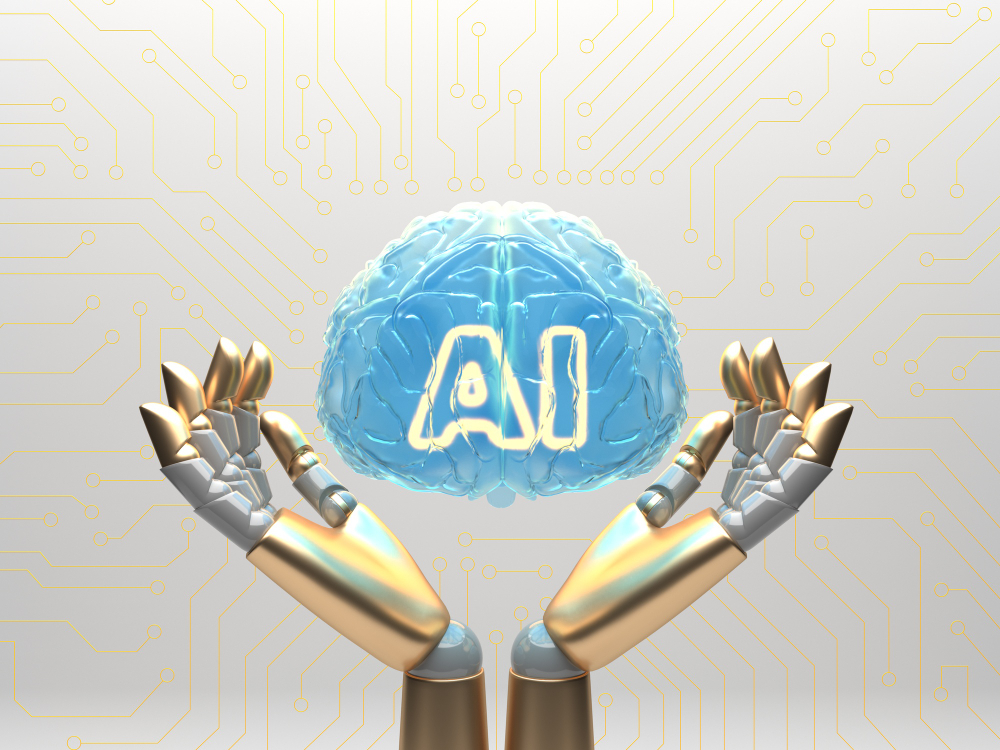Introduction
Conversational agents have come a long way since the simple chatbots of early days. It's been decades since these agents transformed from simple agents to sophisticated systems that can handle complex human interaction. From customer service bots to virtual assistants like Siri and Alexa, conversational agents are today integral to our very interaction with technology.
However, traditional conversational agents have limitations, especially in terms of providing contextually accurate and timely responses. That is where Retrieval-Augmented Generation, or RAG, AI steps into the scene.
RAG AI combines the best of both retrieval-based and generation-based approaches, bringing about a revolutionary new way in which conversational agents interact with users by providing more accurate, dynamic, and personalized responses.
This article explores how retrieval augmented generation model RAG AI is changing the communication interface between the conversational agents and all kinds of industries that are changing the face of current communication interfaces.
Understanding RAG AI
What is RAG AI?
Retrieval-Augmented Generation (RAG) is a hybrid AI framework that enhances the capabilities of conversational agents by combining two active mechanisms, namely retrieval and generation. While traditional language models make responses based on pre-trained knowledge, their generating ability is typically limited because their train data is typically fixed. In contrast, RAG uses real-time retrieval of relevant information from external databases or knowledge sources, while simultaneously using a generative language model, to produce coherent and contextually appropriate responses.
How RAG Merges Retrieval with Generation
RAG AI works by retrieving relevant documents vector databases or information bits from the external knowledge base and then leveraging such retrieved content in informing the response produced by the model.
This will enable the system to produce more accurate, detailed, and even updated responses.
The retrieval-based approach allows the agent to glean the information that is directly relevant to the query of the user, whereas the generative model tames this information into a human-like conversational reply.
Components of RAG ai in conversational ai system
The fundamental aspects of RAG AI are as follows, which include
- Retrieval Mechanism: The retrieval mechanism fetches all information from the knowledge source, database, or document collection. In this way, you would have a chance to access real-time, factual information with the conversational agent.
- Generative Model: This is a type of natural language processing and generation model, often deep learning-based, which takes the retrieved information and crafts it into natural-language responses. Hence, coherence and contextual relevance to the conversation are maintained.
All of these combine to form a conversational system that can simultaneously reach dynamic, ever-changing information while keeping the dialogue natural and engaging.
Newer Contextual Understanding
Response Relevance: Better
One of the biggest advantages of RAG AI is that it gives high relevance response by consuming external knowledge bases.
Traditional conversational agents, being limited to the very wordings in large language models which they are trained, place a higher probability on producing old or wrong answers.
Instead, retrieval techniques are used by RAG to pull in all relevant information from large data sets and ensure that the response is not only generated from a larger data set but also contextually precise.
For example, a RAG-driven conversational agent could allow a customer support agency to access the company's latest product manual or FAQ from the database and thus use this up-to-date information to respond accurately to customer queries in real time to augment customer satisfaction.
Access to Information in Motion
Another valuable feature of RAG AI is real-time access and integration of information that traditional models cannot do.
Such ability enhances conversation flow towards higher informity and is especially very true in fast-moving industries like finance or healthcare.
For instance, a financial conversational agent driven by RAG can fetch the most recent stock prices or trends, making users get current information as they engage with the system.
This dynamic retrieval ability makes conversational agents topical in changing contexts because they always present users with current information available at the time.
Overcoming the Constraints of Traditional Models

Overcoming the Boundary of Fixed Knowledge
Traditional conversational agents are bound to the static knowledge learned during training.
This limits them, by definition, to knowing nothing more than their training datasets and having very little to offer on topics that have a dynamic or changing nature.
RAG breaks the shackles of traditional conversational agents by extending the capability of retrieving dynamic information from outside knowledge sources, which means even if facts are changing or trends are coming into play, the conversation will remain relevant.
This is because information access to current tidbits external data is what makes RAG a game-changer for industries that rely on actual time data, like news agencies, finance, and even legal services.
Reducing Hallucination
One of the major problems with generative models is what might be called "hallucination": the production of plausible-sounding but factually incorrect or inaccurate responses or nonsensical responses.
The reason RAG AI does not have this problem is that it anchors the generative model in retrieved, factual information. Built on this foundation, RAG significantly reduces the risk of transmitting false or misleading information.
For example, in health care-a field where precision is extremely significant-a RAG-powered agent can fetch credible, validated medical information across the world's most secure and trusted databases.
It can then aid doctors to make final decisions by having access to correct information for patients, thus reducing the possibilities of miscommunication or error .
Applications in Diverse Industries

Customer Service
One of the major uses of RAG AI lies in customer support, where speed and accuracy become paramount. The average support agent cannot always give fast answers to the questions that come forth, and especially the questions are complicated.
A conversational agent can draw on massive knowledge bases with which to retrieve data and generate responses that are contextually relevant and accurate, driven by RAG.
For instance, the RAG AI customer support agent to an e-commerce platform might get the latest product specifications and user manuals or shipping information for instant but accurate support to customers without requiring human intercession.
Healthcare
The tremendous potential RAG AI has in the health arena lies in the fact that it could provide patients with reliable and current information that directly originates from medical data sources.
The conversational agents based on RAG can help patients with queries concerning symptoms, treatments, and drugs by retrieving information from trusted health-related resources like PubMed or clinical databases. This would ensure that patients receive evidence-based information that is crucial in all health-related contexts.
Moreover, these tools provide easy access to healthcare providers for the rapid entry into new research or medical guideline information to subsequently aid in making quicker and accurate decisions.
Training
Another area is education where RAG AI has applications in education - conversational agents could help students recover relevant educational material and generate explanations. A RAG-powered educational chatbot could assist students by retrieving articles, textbooks or lecture notes relevant to their queries, then generating personalized explanations to help the student grasp complex topics.
In doing so, RAG-based agents bring retrieval and generation in an interactive manner that can be personalized according to students' needs.
RAG AI significantly enhances personalization since it must fit its responses to specific, context-dependent needs of the user. When a conversational agent is able to retrieve appropriate information customized for one's question, it can provide a more personalized interaction with the user so that he is listened to and understood. This proves very useful in customer service and education where personalized responses enhance user involvement and satisfaction.
Natural and Engaging Dialogues
One of the most apparent capabilities of RAG AI is that it can actually create even more fluid and engaging dialogues. RAG AI can create a more dynamic and contextually appropriate conversation that could make the interaction feel more natural in the experience for the user by providing the agent's response with contextually relevant responses, real-time information integrated into conversations.
This makes the user experience much more satisfying because the responses are not only accurate but also conversationally smooth and human-like.
Data Quality and Retrieval Problems

Good RAG AI is highly dependent on good quality and consistency in what is retrieved. If the knowledge base happens to be outdated or incorrect then more often than not, bad answers are going to come from the system. There's also the issue of selecting the proper, current, and relevant source of data in agent deployment that relies on RAG.
• Scalability
One of the challenges in scaling the RAG AI system is scalability. The ever-increasing sizes of datasets create a massive system to handle large volumes of information without compromising speed, and that is hard to achieve. This demands sophisticated infrastructure and optimization techniques that will ensure that the system scales effectively across different industries and use cases.
• Ethical Considerations
There are also ethical concerns about RAG AI because the increasing usage trend of this technology brings in with it issues that come with it. Bias in data retrieval and generation process may result in skewed or unfair responses that negatively affect the user. Another concern is that retrieving personal data; access to sensitive information involves privacy considerations when dealing with retrieval personal data. Thus, developers should be able to present transparent, fair, and private RAG AI systems.
Future Trends and Developments

• Advancements in RAG Techniques.
Advancements in retrieval algorithms and generative models are expected in the evolution process of the RAG AI. The researchers will work towards improving the efficiency and precision of retrieval while enhancing the naturalness and coherence of the response. This will further lead to more powerful and context-aware conversational agents.
• Integration with Other AI Technologies
RAG AI is not an isolated phenomenon. Trends suggest it is part of other trends of the future for AI, including multimodal AI, which merges text, audio, and visual data in a conversation for added depth. Even emotion recognition technology may be integrated into RAG to make interactions even more sensitive to emotions and further enhance experience.
In Summary, what we think
RAG AI represents a crack in the history of conversational agents: This would incorporate the strengths of retrieval models and generative models to enable an intelligent, contextually aware and accurate machine learning system. In addressing the limitations of traditional models and enhancing personalization, while improving the user experience, RAG is changing how conversational agents are operated, across industries.
Looking forward, RAG's ability to integrate with other AI technologies and evolve capabilities will shape the future of conversational AI, making systems become even more responsive, intelligent, and useful for users all over the world.